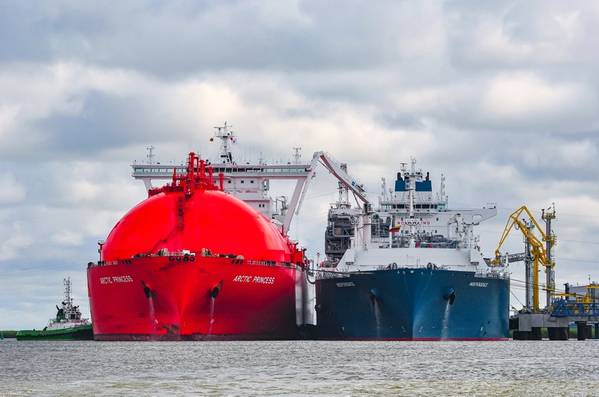
Svanehøj and energy researchers at Engie Lab Crigen have joined forces to develop more effective safety measures regarding LNG storage on FSRU.
According to Svanehøj , stratifications and roll-overs pose significant safety risks when natural gas is liquified and stored in a cryogenic state.
"Recognizing the crucial importance of roll-over prediction software for LNG storage on FSRUs, Svanehøj and Engie Lab Crigen have joined hands to address this critical concern. Limited knowledge of the behavior of LNG on FSRUs necessitates collaboration between industry experts to expand the research and devise effective solutions, the companies said.
"As LNG plays an increasingly pivotal role in the energy infrastructure, we anticipate a rise in the construction of FSRUs, as they offer a more accessible alternative for LNG storage. But there is a significant knowledge gap concerning FSRUs and the behavior of LNG on these vessels. Together with Svanehøj, we can leverage our joint expertise to enhance our understanding of roll-over occurrence on FSRUs," explains Audrey Hubert, R&D Deputy Manager of Liquefaction Lab at Engie Lab Crigen.
According to the companies, Engie Lab Crigen has already conducted simulations to analyze the differences between onshore and offshore LNG storage and to identify the specific risks associated to roll-over occurrence on FSRUs. Results show that predicting and simulating LNG behavior is needed to avoid unwanted events such as stratification, roll-overs, pressure increase, and excess vapor (BOG – Boil-Off Gas).
Simulations have focused on key factors that distinguish offshore LNG storage from onshore storage, namely a higher boil-off-rate, resulting in a higher quantity of vapor generated (BOG), filling capacities (often limited to bottom filling on FSRUs), higher pressure within FSRUs, and vessels motion in the sea, which adds in sloshing to the equation.
"The initial conclusion drawn from the simulations is that there remains a risk of stratification within FSRUs, highlighting the need for effective preventive measures and safety protocols to mitigate this risk. Together with Svanehøj, we strive to deepen our knowledge and develop solutions that address the unique challenges associated with roll-over occurrence on FSRUs," explains Audrey Hubert.
Svanehøj's department for tank control systems is located in Calais, France. It was established in 1961 as Whessoe Inc., a specialist in equipment and systems for cryogenic and low-temperature storage, and has been a part of Svanehøj since 2021.
"With Svanehøj's prediction software and safety instrumentation, operators can actively monitor and manage LNG storage conditions, enabling them to respond promptly to potential roll-over risks. This ensures the integrity of storage tanks while safeguarding personnel and the surrounding environment. Svanehøj recently provided safety instrumentation and roll-over prediction software to the ENI Coral Sul FLNG facility off the coast of Mozambique," Svanehøj said.
"With a gas liquefaction capacity of 3.4 million tons per year and the production of LNG from the 450 billion cubic meters of gas of the Coral reservoir, the Coral Sul FLNG needed the highest safety measures. Here we utilized roll-over prediction software to enable the operators to adjust the regasification process, modify LNG transfer rates, or implement other preventive measures to avoid roll-over incidents, explains Alex Proc, Service Manager at Svanehøj.



